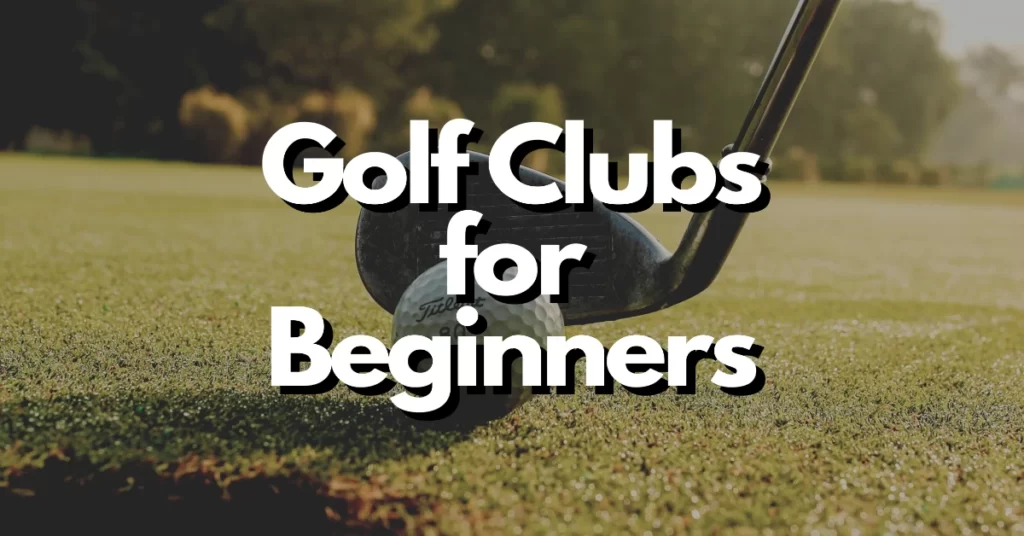Golf is a sport that has captured the hearts of millions around the world. Whether you’re a complete novice or have some experience on the greens, one of the most critical decisions you’ll face is how much to invest in your golf clubs, especially when you’re just starting.
Golf clubs come in a wide range of prices, and as a beginner, it’s essential to strike the right balance between quality and cost.
In this article, we’ll explore how much a beginner should pay for golf clubs, how to choose the right brand, and why it’s crucial not to overspend as you embark on your golfing journey.
Understanding the Basics
Before we delve into the financial aspects of purchasing golf clubs as a beginner, it’s crucial to understand the basic types of clubs and their functions:
1. Woods:
- Woods are designed for long-distance shots from the tee or fairway.
- Beginners typically start with a driver (1-wood) and a fairway wood (3-wood or 5-wood).
2. Irons:
- Irons are used for a variety of shots, from fairway approach shots to chipping around the green.
- Beginners often begin with a set of irons that includes irons numbered 5 through 9 and a pitching wedge (PW).
3. Wedges:
- Wedges are specialized irons designed for specific shots, such as sand wedges (SW) for bunker play and lob wedges (LW) for high, short shots.
4. Putters:
- Putters are used on the green to roll the ball into the hole. They are crucial for achieving low scores.
How Much Should You Pay for Golf Clubs as a Beginner?
The cost of golf clubs can vary significantly based on factors like brand, quality, and whether you’re buying a full set or individual clubs. However, for beginners, the key is to find a balance between affordability and quality. Here are some guidelines to help you determine how much to spend:
1. Full Set vs. Individual Clubs:
- As a beginner, it’s often more cost-effective to purchase a complete set of golf clubs. These sets typically include all the essential clubs you need to get started.
- Complete sets for beginners can range from $200 to $600, depending on the brand and quality.
2. Budget-Friendly Options:
- If you’re on a tight budget, there are budget-friendly golf club sets available that provide decent quality for beginners.
- These sets can cost as little as $150 to $300, and while they may not offer the same performance as high-end clubs, they are suitable for learning the game.
3. Individual Club Purchases:
- If you prefer buying clubs individually, focus on the essentials first. Start with a good driver and a set of irons, including a pitching wedge.
- A quality driver can range from $150 to $400, while individual irons may cost between $30 and $150 each.
4. Consider Used Clubs:
- Another cost-effective option for beginners is to buy used clubs. Many golfers upgrade their equipment regularly, so you can find quality used clubs at a fraction of the cost of new ones.
- Be sure to inspect used clubs carefully for any signs of wear or damage before purchasing.
5. Brand Selection:
- While top-tier golf club brands are known for their quality and performance, they also come with premium price tags.
- As a beginner, you don’t need to invest in the most expensive brands. Look for reputable mid-range brands that offer good value for the price.
6. Trial and Demo Days:
- Before making a purchase, attend trial or demo days at local golf shops or courses. This allows you to test different clubs and find the ones that feel comfortable and suit your swing.
Why Overspending as a Beginner Isn’t Advisable
While it’s tempting to splurge on the latest and greatest golf clubs, especially when you’re eager to improve your game, overspending as a beginner may not be the wisest choice. Here’s why:
1. Developing Your Skills:
- As a beginner, your focus should be on developing your golfing skills. High-end clubs won’t magically make you a better golfer.
- It’s better to invest your money in lessons, practice, and playing rounds to gain experience.
2. Changing Preferences:
- As you progress in your golf journey, your swing and playing style may evolve. What works for you now might not work as well in the future.
- Overspending on clubs that are a perfect fit for your current game may lead to regret later on.
3. High Maintenance Costs:
- Premium clubs often come with higher maintenance costs. If you’re just starting, you may not want the added expense of frequent club repairs or replacements.
4. Golf Course Requirements:
- Many golf courses have specific requirements regarding the use of certain clubs. As a beginner, you may not need clubs designed for advanced players to meet these requirements.
5. Opportunity Cost:
- Money spent on expensive clubs could be used for other aspects of your golfing experience, such as playing more rounds or joining a club.
Conclusion
As a beginner golfer, the ideal amount to spend on clubs should align with your budget and commitment to the game. While it’s essential to invest in clubs that suit your needs, there’s no need to break the bank. Focus on finding a set or individual clubs that provide a balance of quality and affordability.
Remember that your skills and preferences may change as you gain experience, so it’s wise not to overspend on equipment that may not serve you in the long run. Ultimately, golf is about enjoyment and improvement, and that journey starts with the right clubs for your level and goals.
